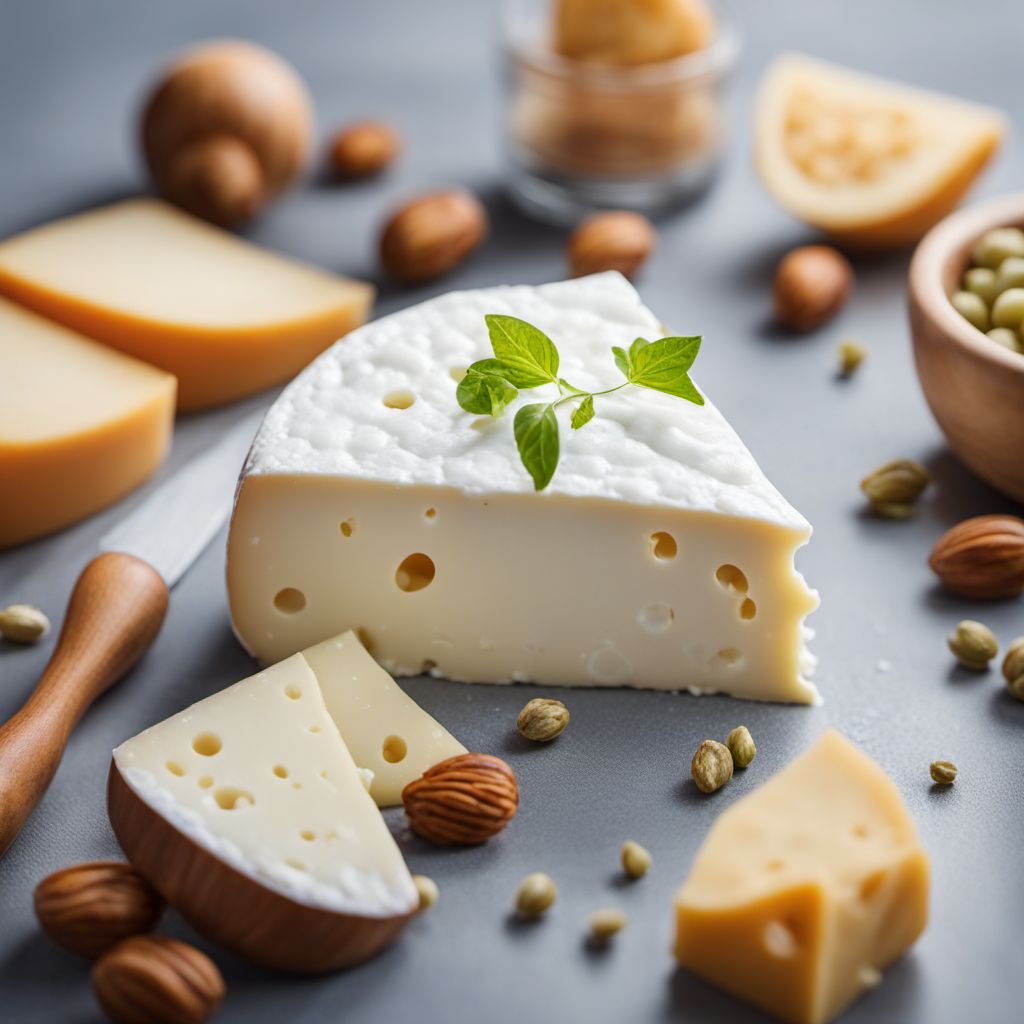
Ingredient
Cheese, chevre mould ripened
Creamy Delight: Exploring the World of Chevre Mould Ripened Cheese
Chevre mould ripened cheese is a soft and creamy cheese made from goat's milk. It has a smooth and velvety texture with a slightly crumbly consistency. The cheese is typically aged for a short period, allowing it to develop a bloomy white rind. Its flavor is tangy and slightly acidic, with subtle earthy and nutty undertones. The cheese has a pale ivory color and a visually appealing appearance due to the bloomy rind.
Origins and history
Chevre mould ripened cheese originated in France, particularly in the Loire Valley. It has a rich historical significance, as goat's milk cheese has been produced in this region for centuries. The cheese-making tradition was passed down through generations, and today, chevre mould ripened cheese is enjoyed worldwide for its unique taste and texture.
Nutritional information
Chevre mould ripened cheese is a good source of protein, calcium, and vitamin A. It is relatively low in calories, with approximately 100 calories per ounce.
Allergens
Chevre mould ripened cheese contains milk and is not suitable for individuals with lactose intolerance or milk allergies.
How to select
When selecting chevre mould ripened cheese, look for a cheese that is firm to the touch but still slightly yielding. The rind should be white and velvety, without any signs of mold or discoloration. Opt for cheese that has a fresh aroma and avoid any with a strong ammonia smell.
Storage recommendations
To maintain the freshness and quality of chevre mould ripened cheese, it should be stored in the refrigerator. Keep it in its original packaging or wrap it tightly in wax paper or plastic wrap to prevent it from drying out. Consume within a week of opening for the best flavor.
How to produce
Chevre mould ripened cheese can be produced by amateur cheese enthusiasts by following specific cheese-making recipes and techniques. It involves culturing goat's milk with the appropriate cheese culture, adding rennet to coagulate the milk, and then draining and shaping the curds before aging the cheese.
Preparation tips
Chevre mould ripened cheese can be enjoyed on its own, spread on crackers or bread, or used as a creamy addition to salads, pasta dishes, and sandwiches. It can also be melted into sauces or used as a topping for pizzas and tarts. To enhance its flavor, pair it with fruits like figs or drizzle it with honey.
Substitutions
If chevre mould ripened cheese is not available, a suitable substitute would be fresh goat cheese or feta cheese, which offer similar tangy and creamy characteristics.
Culinary uses
Chevre mould ripened cheese is commonly used in salads, as a topping for pizzas and tarts, and in creamy pasta dishes. It can also be incorporated into dips, spreads, and stuffed pastries for added flavor and creaminess.
Availability
Chevre mould ripened cheese is commonly available in France, the United States, and other countries with a strong cheese-making tradition. It can also be found in specialty cheese shops and gourmet grocery stores.
More ingredients from this category

Cheese, saga
Saga Cheese: A Creamy Delight from Norway

Cheese, coulommiers
The Creamy Delight

Cheese, pouligny-saint-pierre
The French Delicacy: Pouligny-Saint-Pierre Cheese

Cheese, garrotxa
Garrotxa: The Catalan Gem of Cheeses

Cheese, brie
The Creamy Delight: Exploring the World of Brie Cheese

Cheese, camembert
The Creamy Delight: Camembert Cheese

Cheese, dunbarra
The Delightful Aroma of Dunbarra Cheese

Cheese, saint marcellin
The Creamy Delight: Unveiling the Secrets of Saint Marcellin Cheese

Cheese, chaource
Creamy Delight: Exploring the Richness of Chaource Cheese

